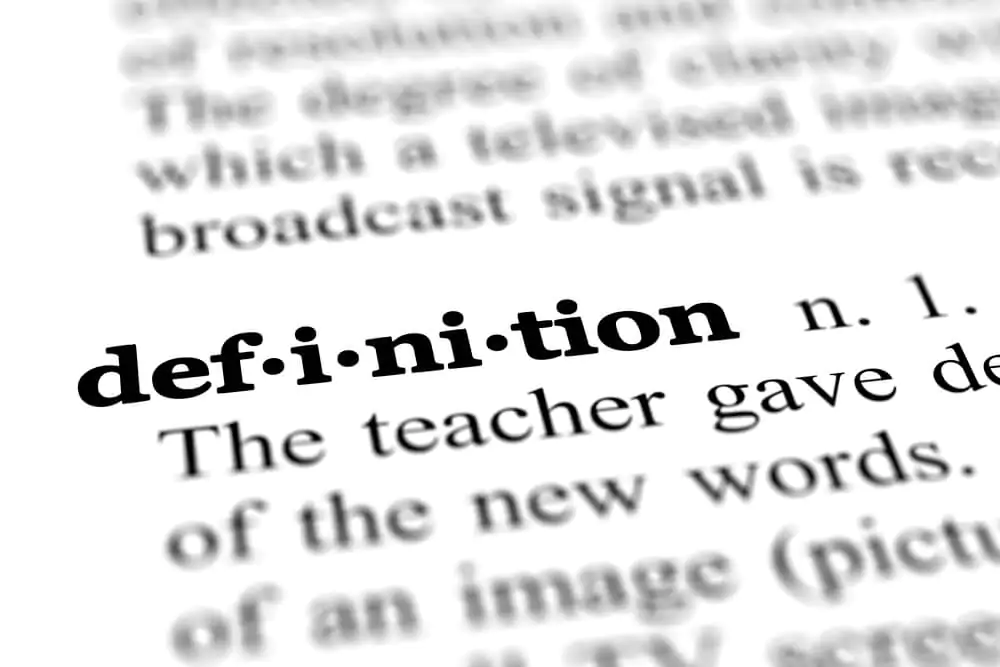Explore these denotation and connotation examples to understand the different meanings of words.
In the English language, words can have two meanings, denotation and connotation. Denotation is the literal meaning of the word, while connotation is a more abstract meaning.
Understanding how these are different is helpful in both understanding literature and in guiding your own writing. This guide will explore the ways a different definition of a word can affect its meaning while also looking at denotation and connotation examples to help make the meaning of these words clear.
Contents
Denotation And Connotation Examples and Definitions

When writing, you must be able to decipher between denotation and connotation. Here is more information to help.
What Is Denotation?
The denotation of a word is the literal meaning of a word based on what the dictionary says about that word. More specifically, the denotative meaning of a word is its “dictionary definition.”
Consider, as an example, the word snake. If you look up this word in the dictionary, the literal definition is some sort of scaly, legless reptile with a long, cylindrical body.
No matter how you choose to use words, you need to understand that every word has an explicit meaning, also known as the denotation of the word. Some readers will think of that literal meaning when they read what you write.
Examples of Denotation

So what are some examples that show how denotation impacts the definition of the word and your writing? Sometimes, denotation makes sentences confusing if the only meaning of a word considered is the literal one. Consider a literal interpretation of sentences like these:
- She felt a little blue.
- He was sick as a dog.
- The paragraph was a little fluffy, rather than concisely stating the opinion.
In the first example, a literal definition means the girl is the color blue, while the second example, when taken literally, means he was sick like a four-legged, furry creature. The final example uses the word “fluff” to indicate filler in writing, but the literal definition is a soft and fuzzy item.
Here are some examples where denotation works:
- The sky looked blue.
- The man’s dog was sick.
- The paragraph was full of filler words.
Here, the sentences say similar things as the first examples but are using the literal meanings, or denotation, of the words.
What Is Connotation?
Connotation refers to the emotional associations of a word. For instance, someone can say they are feeling “blue” when in fact they mean they are feeling a little sad. In this case, the word blue connotes feelings of melancholy and sadness.
Connotation can come in many forms. The negative connotation of a word means it causes people to think of something distressing or negative, while a positive connotation brings happy, joyful thoughts to mind. Some words even have a neutral connotation that is neither positive nor negative but still brings emotion to mind.
Connotative words can vary based on the personal experience of the reader and the associated emotion that the word brings.
Examples of Connotation
A better way to explore the idea of connotation is to look at the following sentences:
- The furniture was cheap.
In this sentence, the word cheap can have both a positive and a negative connotation. For some people, it refers primarily to frugality and good value, while to others it means poor quality. Literally, it means of low monetary cost, but a person’s feeling about something affordable makes a difference in how the sentence gets read.
Looking at synonyms can show how connotation affects writing. For instance:
- She felt a little childish.
This sentence has a negative connotation because the reader thinks the person feels embarrassed. If it read this way:
- She felt a little childlike.
It means practically the same thing, only now the connotation is more positive and whimsical.
More Examples of Connotation and Denotation
To better understand the difference between denotation and connotation, consider these examples:
Slender and Scrawny
Both of these words have the same denotation because they are synonyms for the word thin. However, the word slender has a positive connotation of health and wellness, while the word scrawny is a negative word that means unattractively skinny.
Laid-back and Lackadaisical
Again, these words, being synonyms, have the same denotative meaning. They mean relaxed and not full of care.
However, laid-back is pretty positive in its connotation, but someone with a lackadaisical attitude is someone people consider lazy and uncaring.
Home and House
Here, you have two words that both mean the structure where someone lives. However, their connotations are different.
A home brings to mind warm, cozy feelings of family and comfort, while a house simply brings to mind the cold structure you live in.
Grin and Sneer
In this final example, grin and sneer both mean a type of smile. The grin has a positive connotation, but a sneer definitely feels negative and even villainous.
Using Denotation and Connotation in Your Writing
As you write, you must consider the connotation of the word along with its dictionary meaning. Some words, like the word handicapped, have earned such a negative connotation over the years that they no longer are acceptable to most English readers and writers.
Consider every word you write, and determine if it has a negative connotation. Look for alternate words when needed, so your writing will always convey the meaning, both literally and figuratively, that you want it to.
A Final Word On Denotation And Connotation Examples
English words have more than one meaning. Denotation is the literal, dictionary definition. However, connotation, the figurative meaning, goes much deeper.
In your writing, you must consider both. If a word has a particularly negative connotation, consider swapping it with an alternative that means the same thing without the negative feelings attached.
FAQs On Denotation And Connotation Examples
What do denotation and connotation mean?
Denotation refers to the literal or dictionary definition of a word, while connotation is the figurative meaning that stems from people’s emotions about the word.
What are some examples of connotation and denotation?
The word blue is a good example of a word that shows denotation and connotation. While the denotation is a color, the connotation can be one of negative, sad emotions.